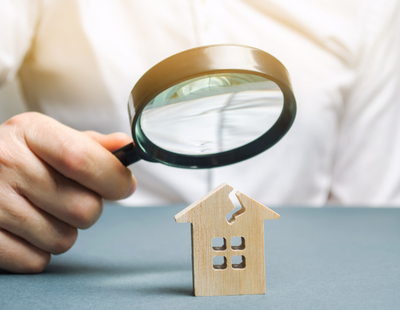Buy To Let insurance company Alan Boswell Group has identified the 10 most expensive repairs that could hit landlords - and they make wallet-crunching reading.
|
Rank |
Property damage |
Estimated costs to repair |
|
1 |
Underpinning |
£5,000 - £25,000 |
|
2 |
Roof repairs |
£3,000 - £10,500 |
|
3 |
Electrical rewiring |
£1,500 - £10,000 |
|
4 |
Rendering |
£2,000 - £8,500 |
|
5 |
Plumbing and water damage |
£450 - £5,000 |
|
6 |
Damp |
£200 - £5,000 |
|
7 |
Flooring repairs |
£500 - £1,800 |
|
8 |
Painting and plastering |
£800 - £1,500 |
|
9 |
Mould removal |
£200 - £1,200 |
|
10 |
Heating and boilers repairs |
£100 - £500 |
Potentially costing landlords upwards of £25,000 depending on property size, underpinning stands out as the priciest home repair. This structural intervention becomes necessary when the foundations of a property weaken - often due to persistent subsidence - prompting a complex process that incurs eye-watering expenses. Fortunately, underpinning is only needed in under 10% of properties affected by subsidence.
Roof repairs are the second most expensive task to undertake, potentially costing landlords up to £10,500 for a complete replacement. Typically, roofs require a full repair every 25 years, although this timeline can fluctuate based on factors such as weather conditions, property age, and roofing material. Rubber roof and tiles are generally cheaper compared to slate or fibreglass. However, if you're dealing with just a handful of cracked or missing tiles needing replacement, the average cost hovers around £200.
The third most expensive fix for landlords is electrical rewiring, which can zap up to a whopping £10,000 for a full property rewiring. Around 7,000 house fires in the UK are caused by electrical faults annually. To prevent loose wiring and ageing electrical installations from sparking unwanted fires, watch for signs of wear-and-tear like flickering lights, buzzing sounds from sockets, and regular fuse box tripping.
Rendering comes fourth on the list, with estimated repair costs soaring up to £8,500. However, applying a fresh coat of render will not only protect your exterior from penetrating damp and prolongs lifespan, but also boosts your property value, potentially increasing your asking price sizably.
Rounding off the top five most expensive property damages is plumbing and water damage, with landlords potentially losing up to £5,000 in severe cases like water damage restoration costs post-flooding. Almost 7,000 UK homes and businesses have been flooded in the past 18 months - the wettest period on record - underscoring the widespread impact of water-related issues exacerbated by the UK's notorious weather.
A spokesperson for the Alan Boswell Group says: “Caring for rental properties goes beyond mere upkeep - it’s about safeguarding investments and ensuring tenants live in safe, compliant homes. Landlords can significantly mitigate maintenance costs with regular inspections in order to address maintenance needs promptly, preventing small issues from snowballing into major repairs.
"Moreover, regular property maintenance tasks such as painting and fixing wear and tear are crucial not only for maintaining a property’s aesthetic appeal but also for enhancing its overall value. Well-maintained properties attract discerning tenants who value quality and are willing to pay competitive rents for a well-cared-for home.”
We're excited to announce that we're working on building a shiny new website for readers of Landlord Today! As part of this process, commenting on articles will be temporarily disabled. We look forward to sharing our new and improved Landlord Today website with you shortly!







.png)

(1).png)





